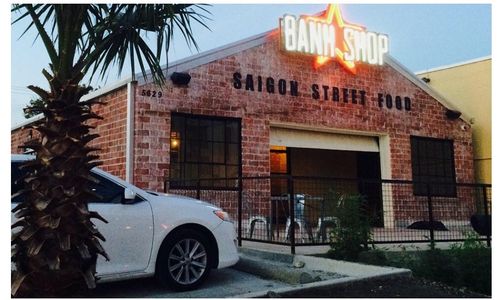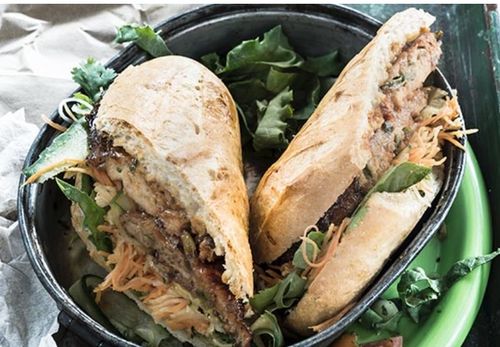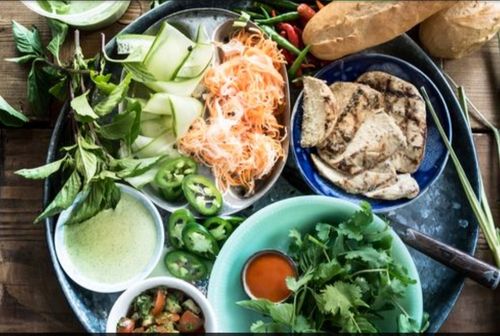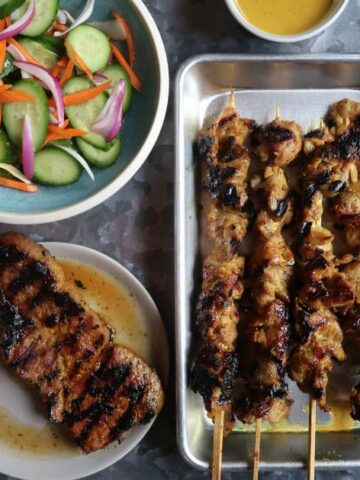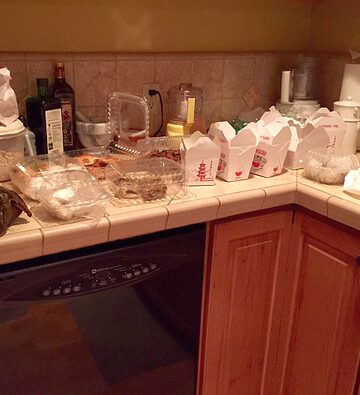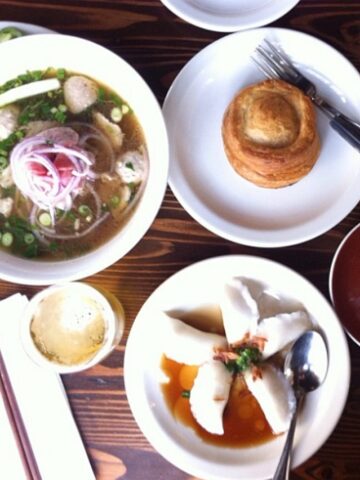Late last week, Yum! Brands, the parent company of Taco Bell, Pizza Hut, KFC and other well-known fast food chains, unveiled a new concept restaurant in Dallas -- Banh Shop. I wrote about this development a few months back and was curious about what they would offer once the Texas outposts opened their doors. There has been business world buzz from Huffington Post, BusinessWeek, etc., as well as skepticism from many banh mi lovers who scoffed at the $5 to $7 prices; I am okay with the numbers.
Huff Post interviewed me for its story and I maintain my position that as an author, teacher and consultant, I aim to get people to make Vietnamese food part of their regular rotation of food. If you want to make good Vietnamese food, you should learn the rules before you break them. So what do I think about Banh Shop?
I've not tasted the banh mi and other dishes because I don't live in Dallas. This is an experimental thing for Yum! Brands. But what I have seen from official photos posted at media outlets seem slightly odd. Banh mi is a type of fast food in Vietnam but what we're talking about here is the Americanized version of fast food. A McDonaldization, if you will.
Banh Shop's banh mi sandwich looks wet, as if the daikon and radish pickle was turned into a coleslaw. The vegetables are positioned below the protein so they are squished. Vietnamese sandwiches are not built to be mushy and gushy. There's so much stuff that if it's too wet (1) you can't parse the party of flavors and textures and (2) it could squirt out of the bread. I hope I am wrong.
The banh mi mis en place photo from Banh Shop reveals a lot. Thin, nearly shaved, slices of cucumber, fine shreds of carrot and a bit of daikon -- the vegetables look wimpy. They lack their characteristic crunch. The beauty of those vegetables is that they say something in the sandwich.
A graphic of something called "Shop Lingo" was a good effort to describe Banh Shop's interpretation of Vietnamese food, albeit an awkward one. The company is appealing to a broad but perhaps knowledgeable audience so they're trying to appear familiar, friendly and smart in very few words. They explain that Sriracha is from Thailand, which is good, but other things can confound and confuse.
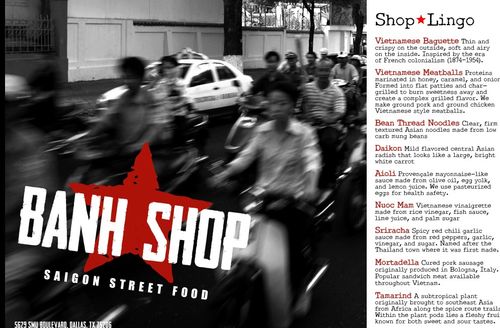
Their Vietnamese meatballs seem more like sausage patties. There's a Viet meatball sandwich (banh mi siu mai) which is made from the filling of dim sum siu mai dumplings and enrobed in tomato sauce; I worked through that conundrum for the recipe that's in The Banh Mi Handbook (page 87). I realize that describing something as a meatball has its allure (meatball sandwiches are beloved!) but many people would expect something roundish and perhaps sauce. For Viet banh mi siu mai, the meatballs are often smashed as they're added to the bread to distribute the meat well along with a bit of the sauce. The charms of Vietnamese cooking can be easily lost in translation.
The copy on daikon radish made me do a double take. It's from Central Asia? That would refer to the "Stans" -- Kazakhstan, Tajikistan, places west of China. Checking online, there were mentions of daikon originating in the area between the Mediterranean Sea and Central Asia, and it was brought to China about 500 BCE; or perhaps it originated in Southeast Asia and continental East Asia. Seems like kind of geeky information that distracts more than informs diners who are trying to figure out what a Southeast Asian sandwich is. Daikon is a popluar vegetable in much of Asia. It's full of crunch like a with a slight funk and bite.
Nuoc mam, widely known as fish sauce, is often also used as shorthand in Vietnamese to mean nuoc cham dipping sauce made with fish sauce, lime, sugar, and vinegar. Banh Shop decided to describe nuoc mam as a vinaigrette, perhaps because it's used as a dressing/sauce for salads. Potentially very confusing. It's disconcerting to me because this is a corporation that can impact how and what people learn about Vietnamese ingredients and food.
Cha lua (gio lua) is an everyday Vietnamese sausage enjoyed in banh mi, noodle soups, on rice, in salads, many things. It's is the Viet equivalent of Italian mortadella (bologna). But Banh Shop's write-up of mortadella makes it seem like Vietnamese cooks borrowed an idea from Italy. Roman coins were found in the southern part of Vietnam but that's a rather tenuous connection to make with regard to a cold cut. I have put mortadella into banh mi and it tastes fabulous but would I define banh mi in terms of mortadella? No.
In my work, I try to present Asian ingredients, techniques and terms in a manner that is culturally relevant to people who may be unfamiliar with Asian foodways. People nowadays want to know the subtle differences and connections. It takes a lot of effort and careful wording to avoid a mish mash of ideas.
At the end of the day, the content the "Shop Lingo" actually troubles me more than how the sandwich is constructed. Vietnamese sandwiches are easy to love. A fast-food education on unfamiliar ingredients, flavors and textures is challenging.
The other thing that puzzles me is how "banh" was misspelled many times in the press as "bahn." Banh mi is in the Oxford English dictionary. No accent marks needed anymore. It's relatively new but the misspellings may portend the future of Vietnamese fast food in America. It may take a while to develop. Let's keep making our own banh mi and patronizing favorite banh mi shops as we watch things unfold. It's interesting.
Your thoughts?
P.S. Quyen's link below to a story on Banh Shop's controversial logo is something worth monitoring. And, a Dallas-based Thrillist writer tastes 3 Banh Shop banh mi and reports in.
9/18/14 Update: Yum will be changing its logo and apologizes for offending the Vietnamese community. See NikkiDK's comment below for a link to the story.
Image credits: Yum (4)
More online:
- Banh Shop's Menu (PDF download)
- Huffington Post: Taco Bell Owner's Next Big Thing is Vietnamese Fast Food
- BusinessWeek: Fast-Food Banh Mi: Yum Tests America's Appetite for Vietnamese Sandwiches
- Entrepreneur: Taco Bell and KFC's Parent Company Sees a Future in Vietnamese Sandwiches













